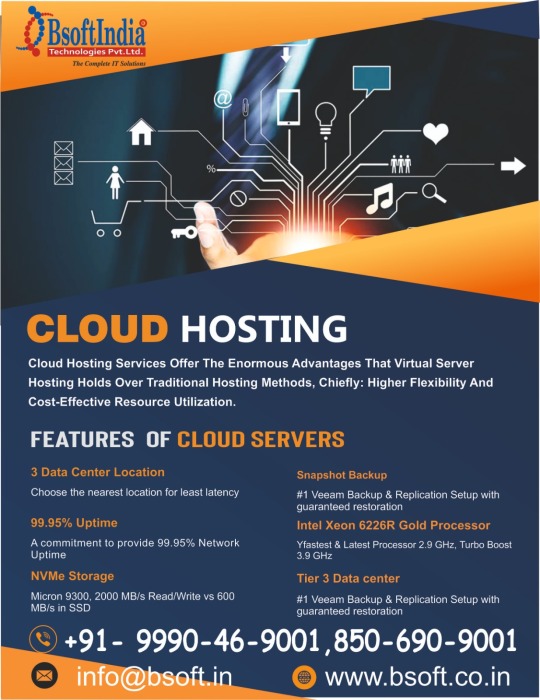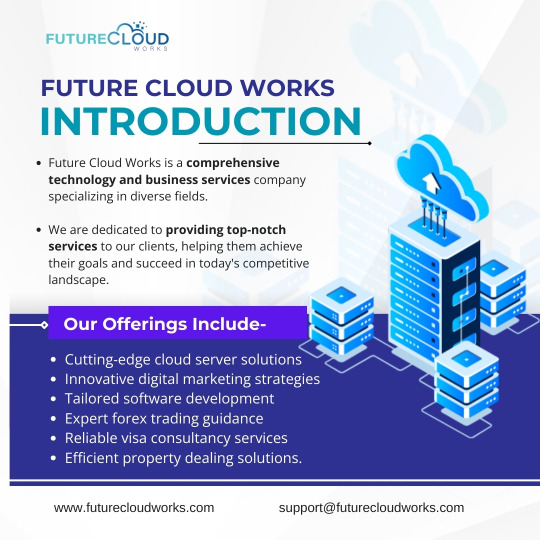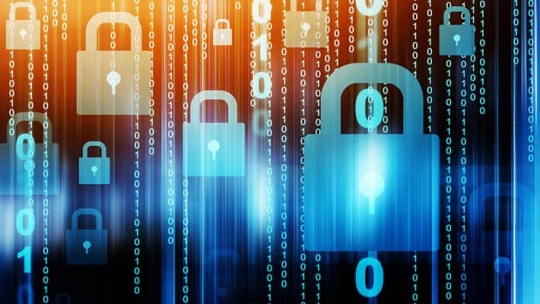#CloudServer
Explore tagged Tumblr posts
Text
cloud hosting service provider in Delhi

With the increasing demand for reliable and scalable IT infrastructure, many businesses are turning to cloud hosting in Delhi. Cloud website hosting offers several benefits over traditional on-premise hosting, including financial savings, increased flexibility, and more advantageous protection.There are numerous cloud website hosting provider companies in Delhi. My research shows that
Bsoftindia Technologies Pvt. Ltd. is a top choice for cloud hosting in Delhi, offering various plans and services tailored to different business needs.
The company guarantees 99.95%high uptime, flexible resource allocation, strong security, and excellent customer support.
Bsoftindia Technologies Pvt. Ltd. provides top-notch infrastructure and customization options, making them a cost-effective and dependable choice for cloud hosting. Get a 7-day free demo of our cloud hosting service. https://bsoft.co.in/cloud-demo/
#clouds#cloud hosting#cloud services#technology#cloudserver#cloud computing#cloudhostingservicesindelhi#delhi#bestcloudhosting#cloudhostingnearyou#service
2 notes
·
View notes
Text
Remember us. Remember that we once MPregged



2 notes
·
View notes
Text
Cloud Server - hệ thống máy chủ ảo đám mây xây dựng trên hạ tầng ảo. Quá trình điều chỉnh, mở rộng trên hệ thống máy chủ ảo này vô cùng linh hoạt.
2 notes
·
View notes
Text
What is Cloud Computing? Everything You Need to Know.

Cloud computing is a paradigm in computing that involves the delivery of various computing resources over the internet. It provides on-demand access to a shared pool of configurable computing resources, such as servers, storage, networks, applications, and services. Instead of relying on local servers or personal devices, users can access and utilize these resources remotely through a network of servers hosted in data centers.
Here are some key aspects and components of cloud computing:
On-demand self-service: Cloud computing allows users to provision and deploy computing resources (such as virtual machines, storage, or applications) as needed, without requiring human intervention from the service provider. This flexibility enables users to scale their resources up or down based on demand.
Broad network access: Cloud services are accessible over the network, usually through standard internet protocols. Users can access cloud applications and data from various devices, including desktop computers, laptops, tablets, and smartphones.
Resource pooling: Cloud providers pool computing resources to serve multiple users simultaneously. These resources are dynamically allocated based on demand, ensuring efficient utilization and optimization of hardware.
Rapid elasticity: Cloud computing enables users to scale their resources up or down quickly. This elasticity allows users to adapt to changing workloads and accommodate peak usage periods without requiring significant upfront investment in additional infrastructure.
Measured service: Cloud computing providers monitor and measure resource usage, enabling the billing and metering of services based on consumption. Users are charged for the actual resources utilized, such as storage, processing power, bandwidth, or active user accounts.
Service models: Cloud computing offers various service models, including:
a. Infrastructure as a Service (IaaS): Provides virtualized computing resources, such as virtual machines, storage, and networks, allowing users to deploy and manage their applications within the cloud infrastructure.
b. Platform as a Service (PaaS): Offers a platform and environment for developing, testing, and deploying applications. Users can focus on application development without worrying about the underlying infrastructure.
c. Software as a Service (SaaS): Delivers software applications over the internet on a subscription basis. Users can access and use these applications without the need for installation or management on their local devices.
Deployment models: Cloud computing can be deployed in different ways:
a. Public cloud: Computing resources are owned and operated by third-party service providers, and multiple users share these resources. Examples include Amazon Web Services (AWS), Microsoft Azure, and Google Cloud Platform.
b. Private cloud: Computing resources are dedicated to a single organization and are not shared with other users. They can be managed internally by the organization or by a third-party vendor.
c. Hybrid cloud: Combines both public and private cloud deployments, allowing organizations to leverage the benefits of both. It provides flexibility in choosing where to deploy workloads and enables seamless integration between the two environments.
d. Community cloud: Computing resources are shared by multiple organizations with common interests, such as specific industries or regulatory requirements.
Cloud computing has transformed the way businesses and individuals use and access computing resources. It offers scalability, cost-efficiency, flexibility, and ease of management, allowing organizations to focus on their core competencies without the burden of maintaining complex IT infrastructures.
2 notes
·
View notes
Text
Best Cloud Server Hosting - Microhost
Secure, scalable cloud server hosting for your business. Unbeatable performance without complexity, 24x7 human support. Get started today!
Link: https://www.microhost.com/cloud
2 notes
·
View notes
Text

𝐋𝐢𝐧𝐮𝐱 𝐖𝐞𝐛 𝐇𝐨𝐬𝐭𝐢𝐧𝐠 To Power Your Website With A Popular Open-Source Platform
👉 Matchless Flexibility & Scalability 👉 Support Of Expert Linux Community 👉 Fully Secured & Monitored Hosting
More Info: https://www.weblinkindia.net/web-hosting/linux_hosting.html
#Weblink#WeblinkIndia#WindowDedicatedServer#DedicatedServerHosting#WindowsServerSolutions#ServerHosting#ReliableHosting#WebHostingSolutions#WindowsServerHosting#SecureHosting#HostingServices#CloudServer
0 notes
Text
What is Cloud Computing?

Cloud computing is the delivery of computing services—such as storage, processing power, and software—over the internet, allowing users to access and manage data remotely. It eliminates the need for physical infrastructure, offering flexibility, scalability, and cost efficiency. Cloud services are typically provided on-demand, enabling businesses and individuals to pay only for what they use.
0 notes
Text
Cách Tạo Máy Chủ Lưu Trữ Đám Mây An Toàn Của Riêng Bạn
Việc tự tạo một máy chủ lưu trữ đám mây không còn quá khó khăn nhờ vào các công nghệ hiện đại và hướng dẫn dễ hiểu. Khi bạn tự quản lý máy chủ đám mây, dữ liệu cá nhân hoặc thông tin nhạy cảm của doanh nghiệp sẽ được lưu trữ an toàn và bảo mật tốt hơn. Trong bài viết này, chúng ta sẽ cùng tìm hiểu quy trình và các yêu cầu cần thiết để tự tạo một máy chủ lưu trữ đám mây an toàn, giúp bạn kiểm soát toàn bộ dữ liệu của mình một cách dễ dàng.
Hãy cùng tìm hiểu thêm chi tiết tại:
THÔNG TIN LIÊN HỆ: Website: cloudserveplatinum.wordpress.com Địa chỉ: Toà S6.01, Vinhomes Grand Park, Quận 9 Phone: 0332979425 Email: [email protected]
1 note
·
View note
Text
youtube
The Global Cloud Sustainability Market is set to experience substantial growth, with revenue expected to reach USD 117.2 billion by 2032, driven by a CAGR of 19.1% from 2024 to 2032. This growth is primarily fueled by increasing demand for sustainable cloud practices as businesses and organizations seek to reduce their carbon footprint and optimize energy usage in their digital infrastructures.
#cloudsustainbilitymarket#cloudsustainability#cloudcomputing#cloud#cloudserver#ict#technologyresearch#technologyrevolution#marketresearchreport#marketresearch#acumenresearchandconsulting#marketresearchcompany#news#Youtube
1 note
·
View note
Text
Features of Cloud Hosting Server
Cloud hosting is a form of web hosting provider that utilises resources from more than one server to offer scalable and dependable hosting solutions. My research suggests that Bsoftindia Technologies is one of the high-quality options for you. They have provided all digital and IT services since 2008. They offer all of these facilities at a reasonable fee. Bsoftindia is a leading provider of cloud hosting solutions for businesses of all sizes. Our cloud hosting services are designed to offer scalability, flexibility, and safety, empowering businesses to perform efficiently in the digital world
FEATURES OF CLOUD SERVERS
Intel Xeon 6226R Gold Processor YFastest & Latest Processor: 2.9 GHz, Turbo Boost: 3.9 GHz NVMe Storage Micron 9300, 2000 MB/s Read/Write vs 600 MB/s in SSD 1 Gbps Bandwidth Enjoy Unlimited, BGPed, and DDOS Protected bandwidth Snapshot Backup #1 Veeam Backup & Replication Setup with guaranteed restoration Dedicated Account Manager Dedicated AM & TAM for training, instant support, and seamless experience 3 Data Center Location Choose the nearest location for the least latency 99.95% Uptime A commitment to provide 99.95% Network Uptime Tier 3 Datacenter #1 Veeam Backup & Replication Setup with guaranteed restoration

Get a free demo and learn more about our cloud hosting solutions. https://bsoft.co.in/cloud-demo/
#cloud services#cloud hosting#clouds#service#technology#marketing#cloudserver#digital marketing#delhi#bestcloudhosting#bestcloudhostingsolution
2 notes
·
View notes
Text

Welcome to Future Cloud Works! We specialize in top-tier cloud server solutions, digital marketing, software development, forex trading, visa consultancy, and property dealing. Let’s help you succeed in a rapidly changing world!
🌐 visit website:- https://futurecloudworks.com/
#futurecloudworks#techsolutions#businessservices#cloudserver#forextrading#visaconsultancy#propertydealing
1 note
·
View note
Text
Server Products Types: Understanding Size, Share, and Growth Trajectories
The global server market size is estimated to reach USD 175.29 billion by 2030, exhibiting a CAGR of 9.8% from 2024 to 2030, according to the recent reports of Grand View Research, Inc. Continued advances in emerging technologies, such as AI, IoT, big data, cloud computing, and 5G, and the growing adoption of innovative solutions based on these technologies across various industries and industry verticals are driving the demand for edge data centers in emerging economies.

Server Market Report Highlights
The rack segment is expected to register a CAGR of 11.3% from 2024 to 2030 in the server market. The segment growth can be attributed to the growing need for scalable data centers, high-density computing, and advancements in emerging technologies, such as IoT, cloud computing, and edge computing, creating vast growth opportunities for market players.
The large enterprise segment is expected to register a CAGR of 10.4% from 2024 to 2030 in the server market. Large enterprises are shifting their focus toward hosted application servers because they can handle workloads from multiple sites, typically from the same database.
The direct segment is expected to register a CAGR of 11.0% from 2024 to 2030 in the server market. Direct distribution can shorten lead times by sending goods directly to customers when they are ready for deployment. These benefits are expected to further supplement the growth of the direct channel during the forecast period.
The IT & telecom segment expected to register a significant CAGR from 2024 to 2030 in the server market. The IT industry has seen a growing implementation of cloud-based services over on-premises ones. Subscribers now get most services through a single service provider. Furthermore, mobile phones' constantly evolving multimedia capabilities are giving rise to new issues related to after-sales service delivery and execution.
Asia Pacific is anticipated to emerge as the fastest-growing region over the forecast period at a CAGR of 10.7% in the server market. The growth of the Asia Pacific market can be attributed to significant players in the region, including Baidu, Huawei Technologies Co., Ltd., Tencent Cloud, and Alibaba.com. Moreover, the region has been witnessing high growth in digitalization, especially in countries such as India.
For More Details or Sample Copy please visit link @: Server Market Report
As businesses move to private and public clouds, edge cloud, co-location facilities, and data centers have started utilizing software-defined networks (SDNs) and virtualization to facilitate the implementation of new data analytics models. However, having realized that the incumbent servers cannot handle the complex workloads, market players in the region are introducing new server designs with higher computational power.
The cloud computing sector attracts small enterprises by offering scalable infrastructure and services. Cloud computing also offers benefits such as on-demand self-service, broad network access, resource pooling, flexibility in terms of cost and time, transparency in the form of usage reports and timely updates regarding consumption rates, and cost updates to customers. It not only helps deploy business quickly but also considerably reduces operational costs. Since data security and recovery are critical concerns for small organizations, they prefer to deploy data on private clouds.
Furthermore, companies are utilizing big data analytics to provide the best services to their customers. Cloud services assist in optimizing business processes for small enterprises. These factors would further supplement the demand for servers in small enterprises during the forecast period.
Server platforms have evolved to incorporate features and capabilities once considered add-ons and were integrated only for advanced deployments. The architecture, product capability, and management and development tools account for a substantial share of the total ownership costs of owning the servers. The total ownership costs include the initial design, deployment, and recurring costs. The initial design and deployment costs cover the costs incurred on hardware, software, installation & setup, integration & testing, and initial deployment. On the other hand, the recurring costs include the costs incurred for technical support & consultancy, implementation, management & administration, monitoring & diagnostics, server downtime, and upgrades.
Additionally, the rise of advanced applications requiring particular settings and substantial computational power from users and providers is fueling the shift toward cloud servers for optimized performance. Businesses increasingly turn to virtual or cloud servers to improve their worldwide networking potential and reduce the expenses associated with operating and maintaining their IT systems. Furthermore, cloud service providers must allocate considerable resources to maintain cooling systems due to physical servers' higher heat output. Consequently, strategies like server leasing and virtualization have become more popular lately.
List of Major Companies in the Server Market
ASUSTeK Computer Inc.
Cisco Systems, Inc.
Dell Inc.
FUJITSU
Hewlett Packard Enterprise Development LP
Huawei Technologies Co., Ltd.
Inspur
Intel Corporation
International Business Machines Corporation
Lenovo
#ServerMarket#DatabaseServers#FileServers#PrintServers#ProxyServers#EdgeServers#ServerNetwork#ServerComputer#ComputerNetworks#ServerTechnology#CloudServer#ServerHardware
0 notes
Text
Firewall Evolution: From Gatekeepers to Intelligent Guardians

The digital landscape is a battlefield, with cybercriminals constantly evolving their tactics. To stay ahead, organizations must fortify their defenses with cutting-edge security solutions. Firewalls, once considered the first line of defense, are undergoing a radical transformation. Let's explore how next-generation technologies are redefining cybersecurity.
Traditional Firewalls vs. Next-Generation Firewalls
Traditional firewalls acted as gatekeepers, inspecting incoming and outgoing network traffic based on predefined rules. While effective against basic threats, they struggled to detect and prevent sophisticated attacks. Next-generation firewalls (NGFWs) are a quantum leap forward, integrating advanced features like deep packet inspection, intrusion prevention systems (IPS), and application control.
Next-generation firewalls offer a comprehensive approach to security, analyzing not just the source and destination of traffic but also the content, applications, and users involved. This granular visibility enables them to identify and block a wider range of threats, including zero-day attacks.
The Rise of AI-Powered Firewalls
Artificial intelligence is revolutionizing cybersecurity, and firewalls are no exception. AI-powered firewalls leverage machine learning algorithms to analyze vast amounts of data, identifying patterns and anomalies indicative of malicious activity. These ingenious systems can adapt to new threats in real-time, making them highly effective against evolving attack vectors.
Benefits of AI-powered firewalls include:
Improved threat detection: AI algorithms can identify subtle indicators of compromise that human analysts might miss.
Automated response: AI-driven firewalls can automatically block suspicious traffic or quarantine infected devices.
Reduced false positives: By learning from past incidents, AI can minimize the number of legitimate activities flagged as threats.
Implementing Machine Learning Firewalls
Integrating machine learning into firewall systems requires a robust data infrastructure and skilled cybersecurity professionals. The process involves collecting and analyzing vast amounts of network traffic data, training machine learning models, and fine-tuning them for optimal performance.
It's essential to strike a balance between accuracy and false positives. Overly sensitive models may block legitimate traffic, while overly permissive models can increase the risk of breaches.
Firewall Best Practices for Advanced Threats
To effectively combat advanced threats, organizations must adopt a layered security approach that includes firewalls as a critical component. Some of the best practices include:
Regular updates: Keep firewall software and firmware up-to-date with the latest security patches.
Strong password policies: Enforce complex passwords and multi-factor authentication.
Employee training: Educate employees about phishing, social engineering, and other cyber threats.
Incident response planning: Develop a comprehensive plan for responding to security incidents.
Firewalls and Cloud Security
As organizations increasingly adopt cloud computing, the role of firewalls has evolved. Cloud-based firewalls provide protection for applications and data hosted in the cloud. However, securing the connection between on-premises and cloud environments remains essential.
Integrating firewalls with other cloud security services, such as intrusion detection systems (IDS) and security information and event management (SIEM) platforms, is essential for a robust defense.
Choosing the Right Firewall for Your Business
Selecting the appropriate firewall depends on factors like organization size, industry, threat landscape, and budget. Small businesses may opt for cloud-based firewalls, while larger enterprises might require on-premises solutions.
Key considerations include:
Features and functionalities: Evaluate the firewall's capabilities based on your specific needs.
Performance: The firewall should not impact network performance.
Scalability: Consider your organization's growth plans.
Cost: Balance the cost of the firewall with its value in protecting your assets.
The threat landscape is constantly evolving, demanding innovative solutions to protect sensitive data and systems. Next-generation firewalls available at www.uvationmarketplace.com , powered by AI and machine learning, offer a robust defense against sophisticated cyberattacks. By understanding the capabilities of different firewall technologies and implementing best practices, organizations can significantly enhance their security posture.
#information technology#cyber security#cloud#firewall#artificial intelligence#cyberattack#data security#cloudserver
0 notes
Text
Difference between space and cloud server
0 notes